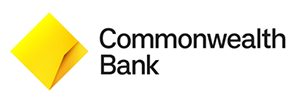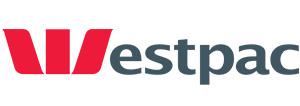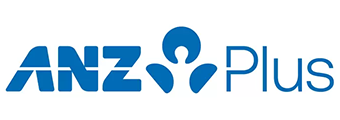
Banking in Australia is pretty user-friendly and advanced compared to other countries. You can switch accounts from the comfort of your couch in about 5 to 10 minutes - all going smoothly. You might not even need to open your computer; a smartphone is likely all that’s needed. By following these steps, it’s so simple you might be able to do it with one hand at halftime while watching your favourite sport, and keep your other hand in a packet of chips.
Before starting, it can be helpful to begin this process on a day or period you’re not being paid, and when you don’t expect to be making a lot of auto-transfers or direct debits.
1. Compare Bank Accounts
The first step in switching bank accounts is to compare your options. Look for accounts that offer the features you need, such as no monthly fees, high-interest rates, or convenient mobile banking options.
Pay attention to any special promotions or incentives that banks might offer for new customers such as introductory interest rates, or extra app features like shopping discounts or auto-rounding features. Many banks offer a competitive savings account rate paired with a fee-free transaction account. These can be handy and convenient.
| 5 | 0 | 0 | 0 | $product[$field["value"]] | $product[$field["value"]] | $product[$field["value"]] | More details | ||||||
NetBank Saver | |||||||||||||
| 0 | 1 | 0 | $product[$field["value"]] | $product[$field["value"]] | $product[$field["value"]] | More details | |||||||
NAB Reward Saver | |||||||||||||
| 0 | 0.01 | 0 | $product[$field["value"]] | $product[$field["value"]] | $product[$field["value"]] | More details | |||||||
Life | |||||||||||||
| $product[$field["value"]] | $product[$field["value"]] | $product[$field["value"]] | More details | ||||||||||
ANZ Plus Flex Saver | |||||||||||||
2. Open New Bank Account
Once you've found the right bank account, the next step is to open it. This can often be done online and takes just a few minutes. You will need to provide some personal information, such as your name, address, and identification details.
-
You will also need to provide your Tax File Number (TFN) if your account bears interest and you want to avoid being taxed at the maximum marginal rate (45%) on savings interest.
Pretty much every bank these days offers a mobile banking app, so you can find it in the Google Play Store or Apple App Store, download it and then get started. After you’ve set it up you can likely add a debit card to your digital wallet straight away - keep in mind a physical debit card likely takes a few days to arrive in the mail.
3. Note Your Direct Debits & Auto Transfers
Before closing your old account, make a list of all your direct debits and automatic transfers. These might include payments for utilities, subscriptions, and regular transfers to savings accounts or other accounts.
-
Make sure to tell your employer of your new bank details so you can get paid to the right bank account. Or do this yourself in your payroll portal.
Having a complete list will make it easier to set up these payments with your new account. Some suggested common direct debits and auto transfers include:
-
Automatic savings account transfers or money to joint accounts
-
Transport: Public transport ticketing, toll roads, roadside assistance, rego and car insurance
-
Health: Gyms, health insurance
-
Utilities: Electricity and gas, phone and internet
-
Debts: Car loans, mortgages, personal loans, credit cards
It can be helpful to take a look at your old bank’s statements to see what comes out. There’s bound to be a couple things you forget, but if you catch it in time, then no harm/no foul.
4. Transfer Funds to New Account
After opening your new account and noting your direct debits, transfer your funds to the new account, noting the BSB and account number, or Pay ID if you have set it up.
-
With Osko and the New Payments Platform it’s easy to transfer money near instantly. Your old bank may have a maximum daily limit, however; make sure you adjust this if you want to transfer larger amounts in one fell swoop.
-
If one of the banks is not an Osko participant, it could still take a few days for funds to clear.
-
As a security feature, some banks might delay the first payment to a new account. In this instance, it can be helpful to transfer a small amount first, wait for it to clear, then do the rest.
Ensure that you leave enough money in your old account to cover any pending transactions or direct debits that haven't been moved yet. This will help you avoid any overdraft fees or missed payments during the transition.
5. Setup New Direct Debits & Auto Transfers
Next, set up your direct debits and automatic transfers with your new account. This can usually be done through your new bank's online banking platform. Be sure to check that all your regular payments are correctly set up to avoid any disruptions.
Cover off the ones listed in step 3 by logging in to any membership portals, such as your car insurance, and changing your payment details.
6. Close the Old Account… or Keep it Open
Finally, decide whether to close your old account or keep it open. It can be helpful to keep it open for a couple of weeks after you start using your new account, and leave some money in it so any pending direct debits or transfers can go through.
If you decide to close it, ensure all your funds have been transferred and all direct debits have been moved and your account balance is zero.
-
Some banks make it more difficult than others, such as calling or emailing to let them know you want to close it. With others you can close it instantly in the app.
There’s no harm in leaving it open. If you feel like you might want it for a rainy day, it can be useful keeping a small amount of money in there, as banks may close the account after a while if it has $0.
Only keep the account open if it doesn’t charge any fees - the big four banks, and many other banks, charge monthly account keeping fees on some products. This could erode any balance you have in there, or send your account into overdraft.
Photo by shurkin_son on Freepik




